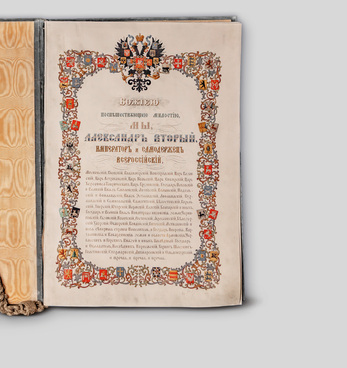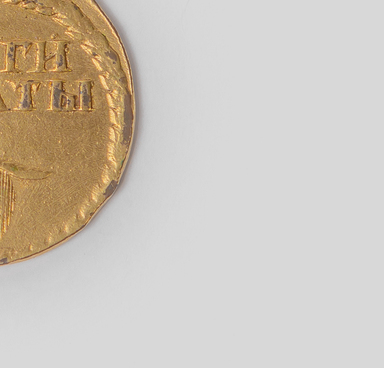The “Golden Room” of the Ivanovo Museum of Local History presents a chrysobull seal of the Byzantine Emperor Andronikos II Palaiologos.
Back in 2004, the chief curator of the museum Nadezhda Nikolayevna Timoshina invited a specialist from the Hermitage — the curator of Ancient Roman and Byzantium coins Vera Valentinovna Gurulyova — to study the collection. She established that the Burylin Museum has many valuable exhibits, including a truly rare one — a chrysobull. In 2006, the expert’s findings were included in the collection of scientific works “Byzantine Idea: Byzantine Empire under the Komnenos and Palaiologos Dynasties”. On the one hand, this topic is rather specific, and on the other hand, it was comprehensively studied by Vera Gurulyova in the aforementioned scientific work, which features important information concerning the attribution and other significant details of Andronicus II’s chrysobull.
Golden chrysobull seals were used exclusively by Byzantine emperors to authorize documents of particular importance, diplomatic and state decrees of law, and diplomatic correspondence with foreign rulers. They also served as a means of propaganda of Byzantine policy and ideology. Constantine Porphyrogenitus wrote that the weight of chrysobulls varied depending on the occasion or the importance of the person to whom the letters were addressed (the weight of chrysobulls is usually divisible by the weight of gold coins, and that is why they are often used interchangeably). Thus, the Caliph of Baghdad and the Sultan of Egypt were deemed the most esteemed in this hierarchy: chrysobulls on the letters to them weighed like four solidi (a gold coin of the Byzantine empire).
The chrysobull consists of two thin golden plates, each stamped using special tongs. The edges of the seal are tightly soldered except for the places where silk cords pass through. When sealing a document, the plates were joined together. In terms of appearance, the chrysobull from the museum’s collection resembles the one kept in the Vatican archive, while the technique is similar to that of the gold seal of Michael VIII (1258–1282) from the Hermitage collection.

